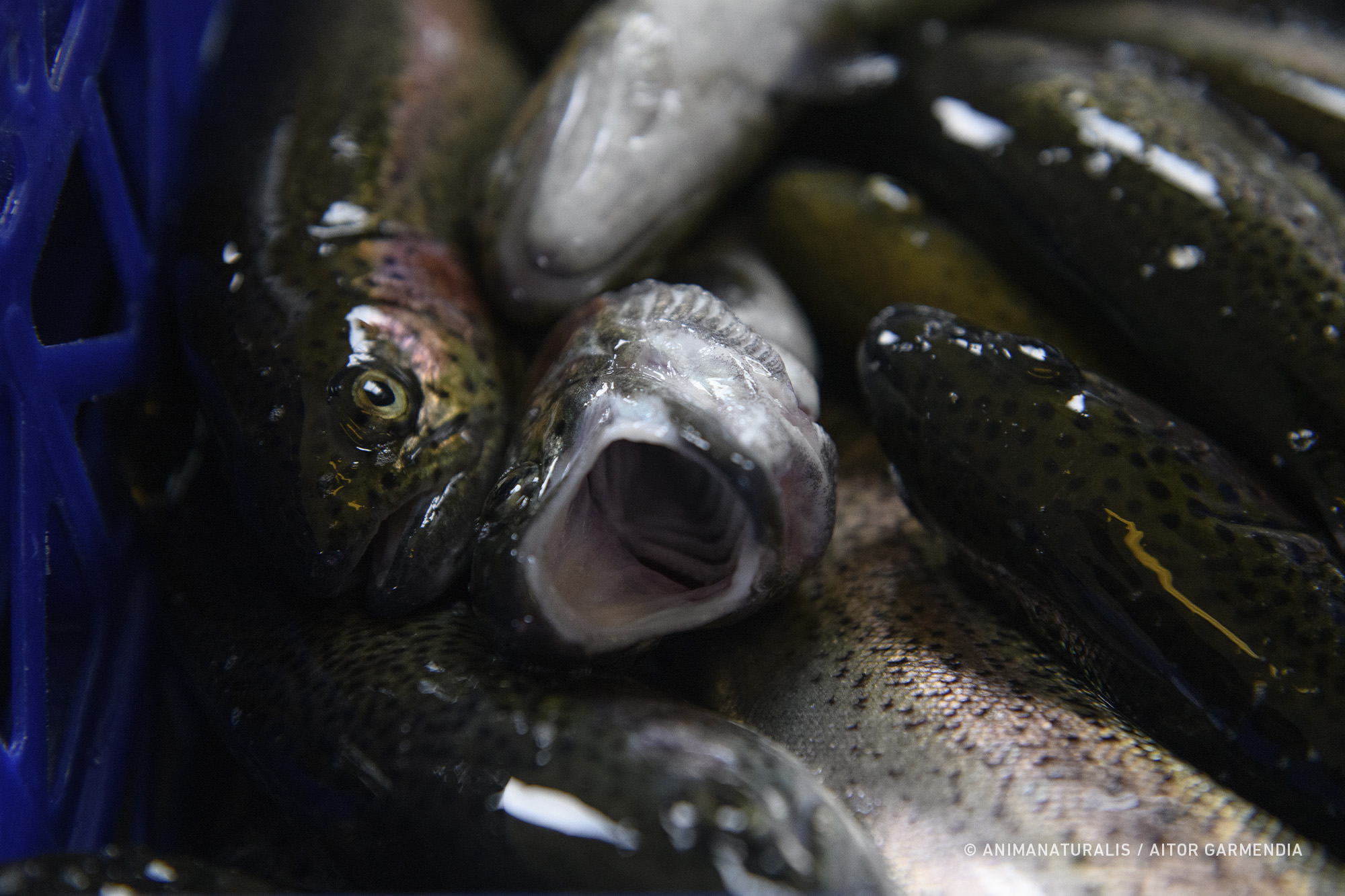Slaughter of Fish in Aquaculture Farms

In fish farms, slaughter methods are among the greatest sources of fish suffering. The most widespread method is slaughter in ice, known as thermal shock, where fish are submerged in a water-ice mixture or crushed ice. During this process, which can last up to 90 minutes, fish experience slow agony from hypothermia and asphyxia. This technique is used for being economical and easy, but is far from humane as fish remain conscious much of the time, struggling to breathe while their gills progressively fail due to low temperatures.
The use of electrical shocks as a stunning method before slaughter, though presented as a more humane option, also has serious deficiencies. Shocks are often insufficiently strong or precise, meaning fish aren't always rendered unconscious immediately. As a result, many fish show signs of consciousness during handling and slaughter, exhibiting agonizing movements and gasping for air out of water, as we have documented. These stunning application errors significantly increase stress and pain levels in fish, contradicting standards established by Regulation (EC) No 1099/2009 on animal slaughter, which prohibits causing them "avoidable pain, distress or suffering".
Even the percussion method, considered "the most humane when applied correctly", faces practical problems. Mechanical failures and erroneous manual intervention can cause ineffective stunning, leaving fish conscious during evisceration or decapitation. Reports suggest error rates in these procedures remain high, and automated systems still fail to completely eliminate suffering.
These methods don't guarantee painless death, leaving fish in prolonged agony that highlights the lack of animal welfare in current aquaculture. Generally, the absence of specific legislation addressing fish welfare in aquaculture allows these cruel methods to remain widely used.
Another welfare-questionable practice is pre-slaughter fasting. While Article 3(1) of EC Regulation 1099/2009 states fasting improves hygiene conditions and reduces stress and microbiological load before slaughter - all benefiting the final product - Spanish law permits fasting up to six days before killing. This compromises animal welfare, potentially causing immune system deficiencies, increased disease risk, behavioral stress, aggression, physical attacks, and hormonal imbalances.
Despite EU guidelines, the vast majority of fish slaughtered annually in the EU, including Spanish aquaculture farms, endure high stress and pain levels, revealing the urgency to end the cruelest practices and find solutions to reduce their suffering.
Sources:
- ScienceDirect. (2024, February). Welfare of rainbow trout at slaughter.
https://www.sciencedirect.com/science/article/pii/S0044848623012176 - European Commission. (2018). Report on the possibility of introducing certain requirements regarding the protection of fish at the time of killing. Brussels.
https://eur-lex.europa.eu/legal-content/EN/TXT/?uri=COM:2018:087:FIN - European Commission. (2018). Slaughter process phases.
https://eur-lex.europa.eu/legal-content/ES/TXT/?uri=CELEX:52018DC0087 - CIWF. (n.d.). Recommendations for trout slaughtering.
https://www.compassioninfoodbusiness.com/media/7436982/126881_ciwf_trout_insert-56.pdf - Spanish Ministry of Agriculture, Fisheries and Food. (n.d.). Final report: Improvement of farmed fish slaughter process: welfare indicators and product quality (WELLSTU).
https://www.mapa.gob.es/es/pesca/temas/acuicultura/if_wellstun_tcm30-696130.pdf - European Commission. (2009). Regulation (EC) No 1099/2009 on the protection of animals at slaughter.
https://eur-lex.europa.eu/legal-content/ES/ALL/?uri=CELEX:32009R1099 - AIDA-ITEA. (2015). Effect of fasting degree-days and pre-slaughter crowding on stomach content and stress response.
https://www.aida-itea.org/aida-itea/files/jornadas/2015/comunicaciones/2015_CdP_02.pdf
